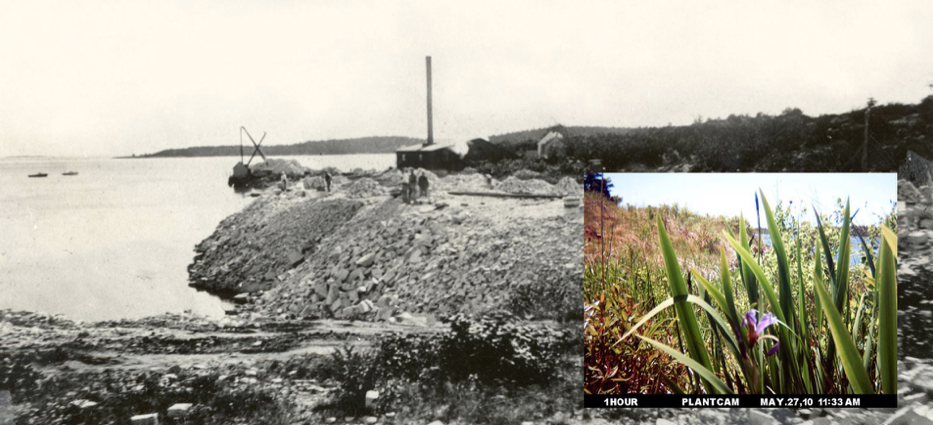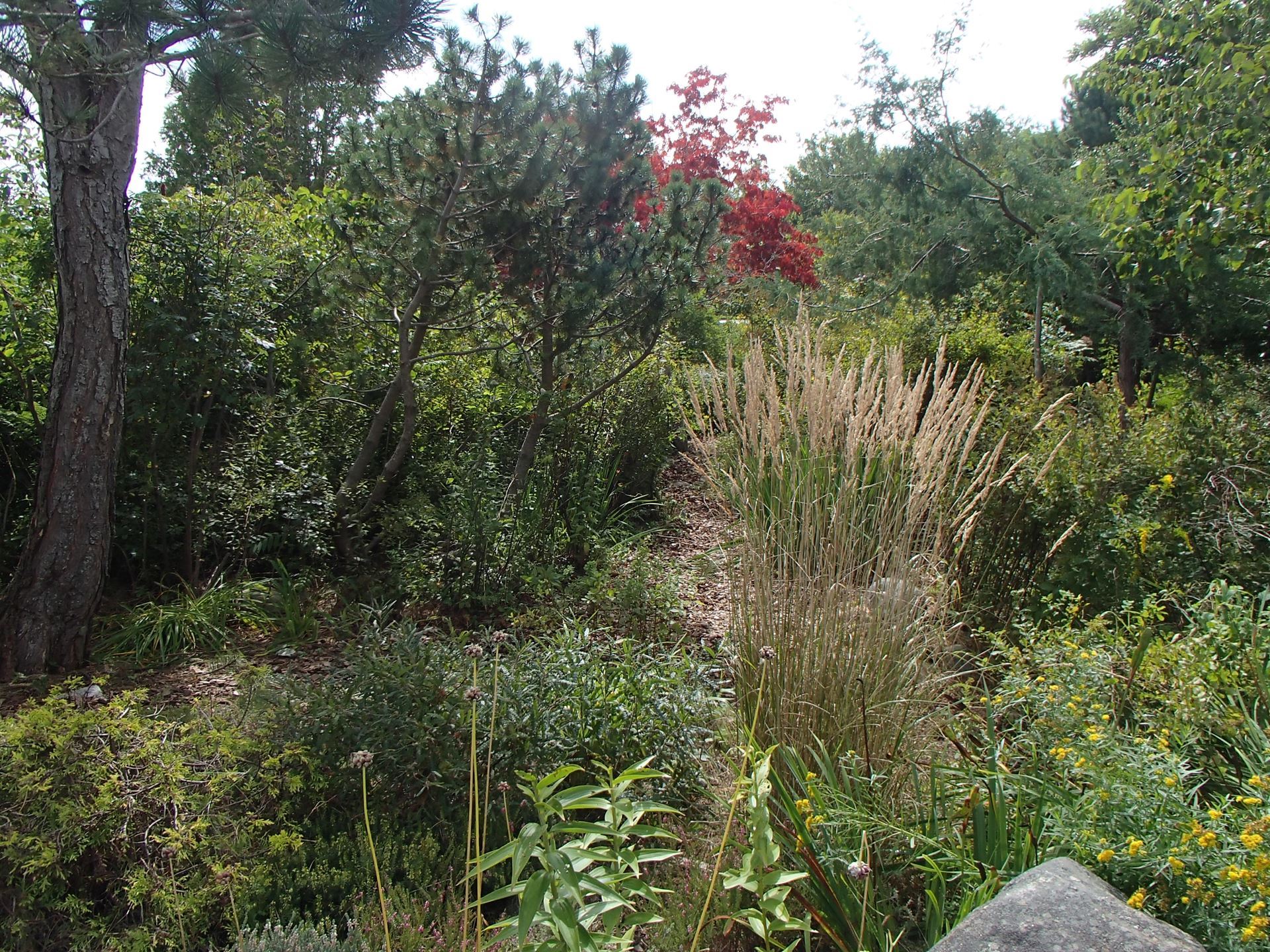 Ghost Nets site as quarrying operation in 1930 courtesy Vinalhaven Historical Society with insert detail of restored wetlands
Ghost Nets site as quarrying operation in 1930 courtesy Vinalhaven Historical Society with insert detail of restored wetlands
Modeling Resilience With Art, an online international workshop about applying trigger point theory to effect ecological healing
Presented by Aviva Rahmani for CAMP
July 11-14, 2020
Our degraded environment is a real world problem for most life on the planet. Most artists concern themselves with real world problems. But artists and artmaking aren’t usually associated with an overtly analytic methodology to solve problems in the real world. However, all formal art training teaches internalizing an analytic approach to perception, analogous to scientific methodologies. Conversely, ecological restoration to heal degradation has been referred to as as much art as science. This workshop will systematically explore how formal rules, equally grounded in art and science, can become the conscious basis for effecting healing ecosystemic triage. We will explore how to apply a set of premises I call trigger point theory (TPT) to environmental healing and implementing the identified strategy. These premises interact on the basis of a set of six rules. Applying these rules will allow participants to make a strategic analysis out of an embodied practice.
TPT is my original approach to solving environmental devastation grounded in artmaking. It developed from my experience creating Ghost Nets 1990-2000. That ecological art project restored a former coastal town dump to flourishing wetlands and formal gardens. The objective of this workshop is to introduce TPT skills. We will apply 6 rules identified in italics, to observe agents in interaction. This will help identify small points of entry into chaotic and degraded ecosystems. Each rule will be introduced in a sequence to build understanding of how they work together.
This workshop has been designed for CAMP to help participants connect theoretical and personal experiences to practical initiatives in their projects. No specialized education is required but an interest in seeing connections between science and art is helpful.
Each day will follow the same routine:
Part I (2 hrs): Lecture discussion and instructions with some screen sharing.
Break (1 hr): Individual experimental explorations of location.
Part II (2 hrs): Presentations of outcomes, discussion of insights and/or challenges with screen sharing
July 11
Part I: Lecture discussion overview of TPT and how it is based in complex adaptive modeling as a form of art to see systems differently. On the first day, emphasis will be on the rule of the paradox of time between urgency and change. Brief presentations from each participant about their current location, practice, interests & current concerns will clarify where each participant will focus for the next four days. Discussion of instructions and Q&A to exercise an exploration of local space about what to look for and record for Part II. Break for exercise.
Part II: Presentation of outcomes and brief introduction to the next day’s rule of TPT for our exercise: how layering information will test perceptions.
July 12
Part I: Lecture discussion on layering information, GIS, and general research, building coalitions.
Break for exercise.
Part II: Presentations of results and brief introduction to the next rule of TPT for exercise: metaphors as idea models.
July 13
Part I: Lecture and discussion of how metaphors function in human thinking & behaviors with visuals. Introduction to the next rule, how we identify critical disruptions in sensitive initial conditions?
Break for exercise.
Part II: Presentations of exercise results and discussion of results; introduction to the final rule: play will teach.
July 14
Part I: Lecture discussion about what has been observed from each of the exercises, what has been learned so far in the context of: perceptions of time, urgency, chaos, points of intervention, and the rules of TPT.
Part II: How did each participant observe small points pf entry into chaotic systems, play with the rules of TPT and the knowledge they brought to the exercise? What might they each take away from the workshop? How might they continue to apply skills they developed to on-going projects?
Bibliography
Dewey, John. Art as Experience. New York: Capricorn Books, 1934.
Heartney, Eleanor "How the Ecological Art Practices of Today Were Born in 1970s Feminism.” Art in America May 22, 2020
Polanyi, Michael “The Tacit Dimension,” Chicago: University of Chicago Press, 1966.
Rahmani, Aviva. A Year in the Blued Trees Symphony, 2019*.
Rahmani, Aviva. Fifty Years of Work, 2019*.
Aviva Rahmani, "Fish Story Memphis: Memphis is the center of the world," Journal of Environmental Studies and Sciences, Springer; Association of Environmental Studies and Sciences, vol. 4(2), pages 176-179, June, 2014.
Rahmani, Aviva. Gulf to Gulf webcasts on Vimeo.
Rahmani, Aviva. “The Music of the Trees: The Blued Trees Symphony and Opera as Environmental Research and Legal Activism,” Leonardo Music Journal, Volume 29 - December 2019, p. 8-13.
Upaya Zen Center. “A Wiser, Braver World,” YouTube, June 21, 2020.
*Note: artist’s books available in hard cover, cost with shipping $70.
 Ghost Nets site after restoration detail of riparian zone 2018 Photo: Aviva Rahmani
Ghost Nets site after restoration detail of riparian zone 2018 Photo: Aviva Rahmani